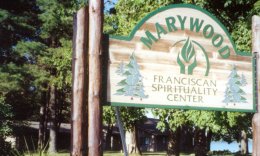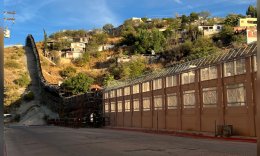News
GivingTuesday 2025
All are invited to join us for GivingTuesday 2025. GivingTuesday began in 2012 and has since grown, now taking place annually on the Tuesday after Thanksgiving, following the traditional days of... Read More
Moving 'towards right relationship' in a 'hurting world'
“Catholic sisters are the progressive edge of the Catholic Church, and the Catholic Church is the largest private landowner in the world.” So says Sarah Jane Bradley, co-founder of Land Justice... Read More
In loving memory: Sister Janet Fischer
Franciscan Sister of Perpetual Adoration Janet Fischer died Nov. 20, 2025, at the age of 88 and in her sixty-sixth year of religious profession, at St. Rose Convent in La Crosse, Wisconsin. The call... Read More
PBS Wisconsin reports on FSPA land transfer to Lac du Flambeau Tribe
The Public Broadcasting Service of Wisconsin shared a story regarding the land transfer between the Franciscan Sisters of Perpetual Adoration and the Native Tribe, Lac du Flambeau Band of Lake... Read More
A historic act of restoration: FSPA returns Arbor Vitae property to Lac du Flambeau Tribe
Originally published Friday, Oct. 31. In the spirit of relationship and healing, the Franciscan Sisters of Perpetual Adoration transferred the Marywood Franciscan Spirituality Center property to the... Read More
Meet our newest Wiscorps service members!
Leah Jakusz, FSPA Ecological Assistant Hi! My name is Leah Jakusz (pictured above left). I am currently serving as the 2025-26 FSPA ecological assistant through the Wiscorps Individual Placement... Read More
Honoring Black Catholic History Month with Sister Thea Bowman
In observance of Black Catholic History Month this November, we honor the life and legacy of Servant of God Sister Thea Bowman (1937-90), a prophetic voice whose witness continues to inspire... Read More
Sister Katie Mitchell: 'Pillar of hope'
Franciscan Sister of Perpetual Adoration Katie Mitchell received the St. Frances Xavier Cabrini Award at the Archdiocese of Chicago’s 13th Annual Keep Hope Alive 2025 benefit and celebration,... Read More
St. Francis' Song: a gift of reflection and thanks
As we enter this season of gratitude, we share with you "St. Francis' Song," created in celebration of the 800th anniversary of "The Canticle of the Creatures." This collection of art, poetry and... Read More
Desperate Journeys Training: Learning about families on the move
The Franciscan Sisters of Perpetual Adoration partnered with La Crosse Habitat, Coulee Cap and the Franciscan Spirituality Center to host a Desperate Journeys training. Sheng Lee Yang, CEO of Us 2... Read More










